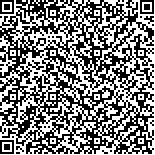Archive > Volume 41 Issue 6 > 2015,41(6):738-744. DOI:10.7519/j.issn.1000-0526.2015.06.008 Prev Next
Mesoscale Convective Systems (MCSs) Tracking and Nowcasting Based on Radar Mosaic Data
- Article
- Figures
- Metrics
- Preview PDF
- Reference
- Related
- Cited by
- Materials
Abstract:
Based on the automatic identification mesoscale convective systems (MCSs), tracking radar echoes by crosscorrelation (TREC) and area overlap method (AOM) were used to complete the new tracking and nowcasting algorithm. TREC was used in the new algorithm to get motion vector, then this vector was used to extrapolate radar echoes of corresponding MCSs. According to extrapolation echoes and realtime radar echoes, AOM was used to make tracking, and simultaneously the MCSs nowcasting was completed. The performance of the algorithm was evaluated by applying four different types of severe convection cases. The results demonstrate that the algorithm can make tracking and nowcasting effectively. The speed of MCSs extracted by new algorithm is more stable, and does not fluctuate rapidly due to splitting, merging, developping and decaying. Forecast errors are reduced effectively and 6-60 min nowcasting errors are cut more than 20% by using the new algorithm instead of the old one. However, the new algorithm can extract stable moving speed of system, but it can not get propagating speed. The old algorithm can extract the integration of moving speed and propagating speed, but the extracted speed is unstable being easily affected by centroid variation and creating bigger nowcasting errors. The speed extracted by new algorithm is unstable during the dying period, causing the failure of tracking. When using the old algorithm, such failure may happen in the case of splitting or merging.
Keywords:
Project Supported:
Clc Number:


Mobile website









